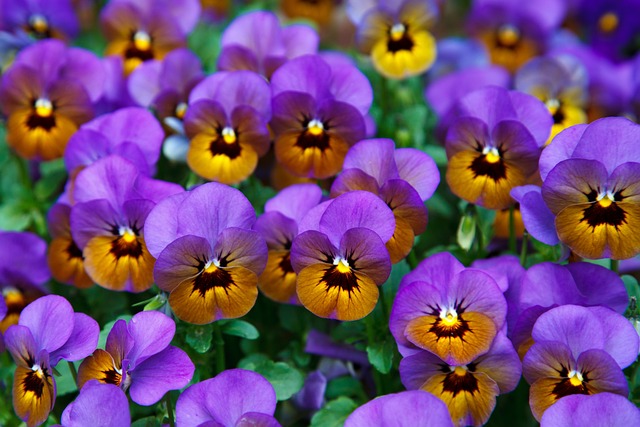Vertical wall gardens are an innovative solution for integrating greenery into urban spaces with limited room, offering both ecological and aesthetic benefits. These systems maximize space by directing plant growth upward, making them ideal for balconies, small courtyards, or indoor areas. Hydroponic or aeroponic vertical gardens provide a water-efficient and space-saving alternative to traditional soil gardening, allowing for year-round cultivation of rich vegetation. The modular design enables customization to suit specific garden needs and plant requirements. Successful implementation requires strategic planning, including site evaluation for weight-bearing capacity, sunlight exposure, and climate compatibility, as well as the installation of irrigation systems tailored to each plant's water needs. A diverse selection of plants with different growth patterns and light preferences contributes to both the garden's visual appeal and its ecological balance. Maintenance is crucial, involving regular watering, pruning, pest/disease monitoring, and soil nutrient management to ensure a thriving vertical wall garden that enhances any living space. Regular upkeep, safety checks, and adherence to best practices for plant selection and care are essential for maintaining a healthy and sustainable garden.
Embark on an immersive journey into the world of sustainable gardening with our expert guide on vertical garden installation. This article meticulously explores the concept of a vertical wall garden, providing a thorough understanding of its benefits and workings. From assessing your site to selecting the perfect plants for your space, each step is covered in detail. Follow our clear, step-by-step instructions to create your own living wall, and learn the maintenance strategies that will ensure its longevity and vitality. Transform your garden into a vertical oasis with practical advice tailored to enhance both your environment and aesthetic pleasure.
- Understanding the Vertical Wall Garden: A Comprehensive Overview
- Site Assessment and Planning for Your Vertical Wall Garden
- Selecting the Ideal Plants for Your Vertical Wall Garden
- Step-by-Step Guide to Installing a Vertical Wall Garden
- Maintenance Strategies and Best Practices for Vertical Wall Gardens
Understanding the Vertical Wall Garden: A Comprehensive Overview

Vertical wall gardens have become a staple in urban and limited-space landscapes, offering a sustainable and aesthetically pleasing solution for those looking to incorporate greenery into their environment. These innovative gardening systems allow for efficient use of space by growing plants upwards rather than outwards, making them ideal for balconies, small courtyards, or even indoors. The integration of hydroponic or aeroponic systems within vertical wall gardens further enhances their efficacy, as these soilless cultivation techniques require less water and space while still yielding lush, vibrant plant life.
The structure of a vertical wall garden typically consists of panels or pockets designed to hold soil or a growing medium, with supports that can be attached securely to a wall. The design is versatile, catering to both ornamental and edible plants, and can be tailored to the specific needs of the space and the plants being grown. Proper planning and selection of appropriate plant species are crucial for the success of these gardens, as they ensure that the garden thrives while complementing the architectural elements of the surrounding area. Additionally, with careful consideration of factors like light exposure, watering schedules, and temperature control, a vertical wall garden can become a dynamic feature of any space, enhancing both its functionality and beauty.
Site Assessment and Planning for Your Vertical Wall Garden

When planning for a vertical garden installation, a thorough site assessment is paramount to ensure the success and sustainability of your green wall. Evaluate the chosen wall’s structure, ensuring it can support the weight and irrigation systems of the garden. Assess sunlight exposure throughout the day; most plants require a minimum of six hours of direct sunlight for optimal growth. Consider the local climate and weather patterns to select appropriate plant species that thrive in your region’s conditions. Additionally, water accessibility should be a key factor in site planning, as efficient irrigation systems are crucial for maintaining a healthy vertical garden.
Incorporating the right mix of plants is essential for creating a balanced vertical wall garden ecosystem. Select a variety of plants with different growth habits and light requirements to create an aesthetically pleasing and diverse garden. During the planning phase, also consider the maintenance requirements; some plants may need frequent pruning or training, which should be factored into the overall design. Finally, the orientation and dimensions of the wall will influence the types of supports and irrigation systems you’ll need, so plan accordingly to facilitate easy access for both watering and maintenance.
Selecting the Ideal Plants for Your Vertical Wall Garden

When curating a selection of plants for your vertical wall garden, it’s crucial to consider factors such as light exposure, local climate, and available space. Opting for species that thrive in similar conditions ensures a lush and vibrant garden all year round. Succulents, with their diverse shapes and textures, are an excellent choice for areas receiving moderate sunlight, while herbs like basil and mint can add both greenery and flavor to your vertical garden, particularly in kitchen-adjacent spaces. Climbing plants such as ivy or clematis can be integrated for a dynamic element, adding depth and vertical interest to the garden. Additionally, incorporating edible plants not only enhances the aesthetics but also provides fresh produce; consider varieties like tomatoes or cucumbers that can be trained to climb, offering both culinary delight and visual appeal.
Another important aspect is selecting plants with varying growth rates and maintenance needs to create a balanced ecosystem within your vertical wall garden. Fast-growing options like pole beans or peas can offer quick rewards and are ideal for rotation, while slower-growing species like figs or grapes provide long-term investment and beauty. Pairing these with hardy perennials ensures that your garden remains full and diverse throughout the seasons. Always refer to regional plant guides and consult with a local nursery or horticultural expert to ensure the plants you choose are well-suited to your specific garden conditions, further enhancing the success of your vertical wall garden endeavor.
Step-by-Step Guide to Installing a Vertical Wall Garden

Embarking on a vertical wall garden project can transform any space into a lush oasis, enhancing both aesthetics and sustainability. To begin, select a suitable location on your wall that receives ample sunlight, ensuring the health and growth of your plants. Prepare the substrate by choosing high-quality potting mix specifically designed for vertical gardens, which will provide optimal nutrients and support for the plants’ roots. Install sturdy supports, such as galvanized steel rods or heavy-duty plastic channels, directly into the wall to anchor each planter securely. Ensure these supports can bear the weight of the soil and plants, particularly in windy or inclement weather conditions.
Once the structural components are in place, attach individual planters to the supports, spacing them evenly across the selected area. Each planter should have a self-watering system to facilitate consistent moisture delivery without over-saturation. Fill the planters with the prepared potting mix, gently firming the soil to eliminate air pockets. Select your plants based on their sunlight requirements and space them accordingly within each planter, ensuring they have room to grow and thrive. Finish by adding a drip irrigation system for automated watering, tailored to the specific needs of the chosen plant species. Regular maintenance, including pruning, fertilizing, and monitoring for pests or diseases, will maintain the health and beauty of your vertical wall garden.
Maintenance Strategies and Best Practices for Vertical Wall Gardens

Maintaining a vertical wall garden requires a strategic approach to ensure the health and longevity of both the plants and the structure itself. Regular watering is paramount; an automated irrigation system can be a valuable investment, as it provides consistent moisture without over-saturating the soil. Additionally, the positioning of your vertical garden is crucial for sunlight exposure. Place it where it receives ample but not excessive light to prevent plant stress or dehydration. Pruning and trimming are also essential practices; they encourage new growth and maintain the plants’ aesthetic appeal. Regular inspections for pests and diseases, along with prompt treatment when necessary, will protect your garden from common garden ailments that can quickly spread in a densely planted vertical wall garden.
Monitoring soil nutrients is another critical aspect of maintaining your vertical wall garden. Soil depletion can lead to poor plant health, so it’s important to use a balanced fertilizer according to the manufacturer’s instructions and the specific needs of your plants. Regularly checking for any signs of nutrient deficiency or excess will help you adjust your care routine proactively. Moreover, ensuring that the wall garden is securely attached to its support structure is essential, as vibrations from wind or watering can loosen fixtures over time. Regular checks and minor adjustments can prevent more significant issues from arising, guaranteeing both the safety of your vertical garden and the longevity of your greenery investment.
Vertical gardens have transformed urban spaces into lush green canvases, offering both aesthetic appeal and sustainable living solutions. This article has delved into the intricacies of expert vertical garden installation, from understanding the essence of a wall garden to meticulous site assessment and plant selection. By following the detailed step-by-step guide and adopting maintenance strategies discussed, one can ensure a thriving vertical wall garden that enhances any environment. With careful planning and consistent care, these living walls become not just an ornamental feature but also a testament to eco-friendly innovation in modern gardening practices. Embrace the verdant future with a vertical wall garden, a smart choice for space-efficient greenery.
